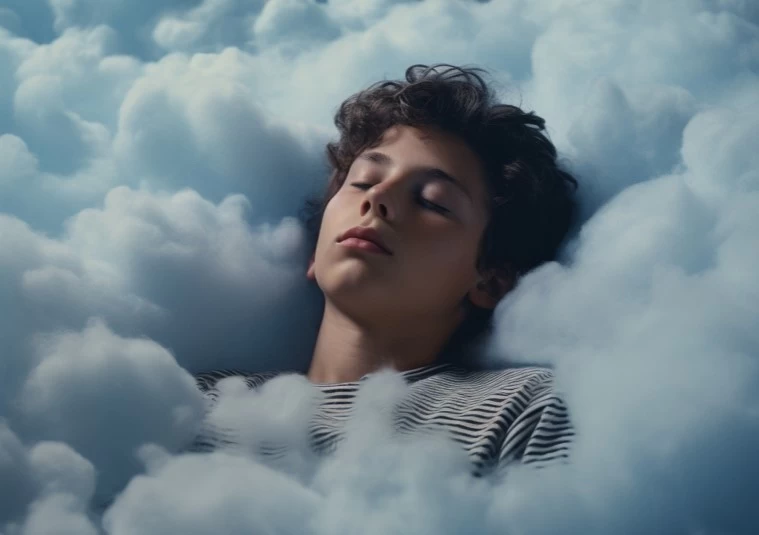
Dream Analysis
- Dream Analysis
Dreams are a physiological cycle where unconscious desires and wishes are discharged. Research has shown that when REM sleep is prevented during the night, the REM (rapid eye movement) periods the following day are found to be twice as long. This indicates that individuals deprived of REM sleep must fulfill their physiological needs during non-REM periods. If REM periods are prolongedly obstructed, individuals are known to start experiencing hallucinations and daydreams while awake, underscoring the essential nature of dreams.
Dreams are evaluated differently according to various psychological schools, with psychoanalysis being the most in-depth in terms of the psychiatric aspect of dreams. Freud, the founder of psychodynamic theory, famously referred to dreams as the "royal road to the unconscious."
According to the psychodynamic approach, dreams are a means of discharge for unconscious impulses through symbols. Urges deemed unacceptable by the superego are pushed into the unconscious by the ego. However, these repressed urges exert pressure on the ego due to the need for discharge, leading to inner tension and anxiety in the individual. Dreams facilitate the reduction of tension by allowing the discharge of these repressed impulses. However, since the explicit expression of urges, even in dreams, is prohibited by the superego, they undergo censorship and are expressed through symbols. Deciphering these symbols is achieved through dream analysis, serving as a tool for the therapist to access the client's unconscious content.
The unacceptable yet necessary urge constitutes the essence of the dream. Through censorship mechanisms, the essence of the dream is concealed with filler content, diverting attention away from the essence of the dream. The clear and distinct aspects of the dream are not the essence of the dream; they are unnecessary filler materials aimed at diverting our attention away from the essence of the dream.
Since the content is censored, the analysis focuses on the emotions generated by the dream in the individual.
Censorship in dreams can be achieved through distortion. While the dream scenario is constructed by the ego, censorship can be applied in various ways. For example, the distortion method can be used, leading to the core essence becoming vague or altered. In dream analysis, focus is placed on the fuzzy areas, and the essence is sought through the emotions experienced by the individual. For instance, someone who harbors anger towards their father may dream of engaging in a fight with someone else. Since expressing anger towards the father may cause distress, a relatively insignificant figure may replace the father in the dream. Alternatively, the person with whom the individual fights in the dream may be blurred.

Economic principle in dreams is another fascinating feature. Multiple events can be depicted with minimal material by representing them through a single figure. This is known as the economy principle of dreams. For example, anger towards multiple people can find an outlet through a single person depicted in the dream. The clock of the figure in the dream may represent the father's clock, the hair the sibling's, and the jacket the boss's, allowing the discharge of anger towards three different individuals through a single figure.
There exists a symbolic language common to all humans in dreams. Some symbols are universal across cultures and inherent in human nature. For instance, sharp objects may represent male genitalia, green symbolizes tranquility, light represents clarity, darkness signifies fear, and soil represents fertility. However, some symbols may vary from culture to culture. For instance, an old woman may symbolize fertility in some cultures and death in others. While universal and cultural symbols may conceal the essence of the dream, each individual also possesses personal symbols, the deciphering of which becomes crucial in analysis. The more we can decipher these, the more accurately the dream can be interpreted, facilitating a deeper understanding of the individual in the therapeutic process.
Sometimes, the material one wishes to represent in a dream may be too extensive to be expressed in a single dream. In such cases, a series of consecutive dreams resembling a series may occur. These sequential dreams need to be followed, and the pieces need to be pieced together to understand the whole scenario.
Recurring dreams can sometimes depict long-term psychological distress. Changes may occur in these dreams over time, serving as indicators of personality changes and the effects of psychotherapy. Particularly, figures such as shoes and vehicles are commonly encountered in dreams indicating personality changes.
Sometimes, dreams may serve to process and digest past traumas.
Dreams may also occur as a preparation for feared situations. For instance, someone highly anxious about losing loved ones may prepare their ego for this loss by frequently dreaming of death-themed scenarios.
Dream analysis is important in the psychotherapeutic process, as it allows for a better understanding of and connection with the client, as well as for monitoring the progress of treatment.

Spc. Dr. Tuba Öğer
Psychiatrist





